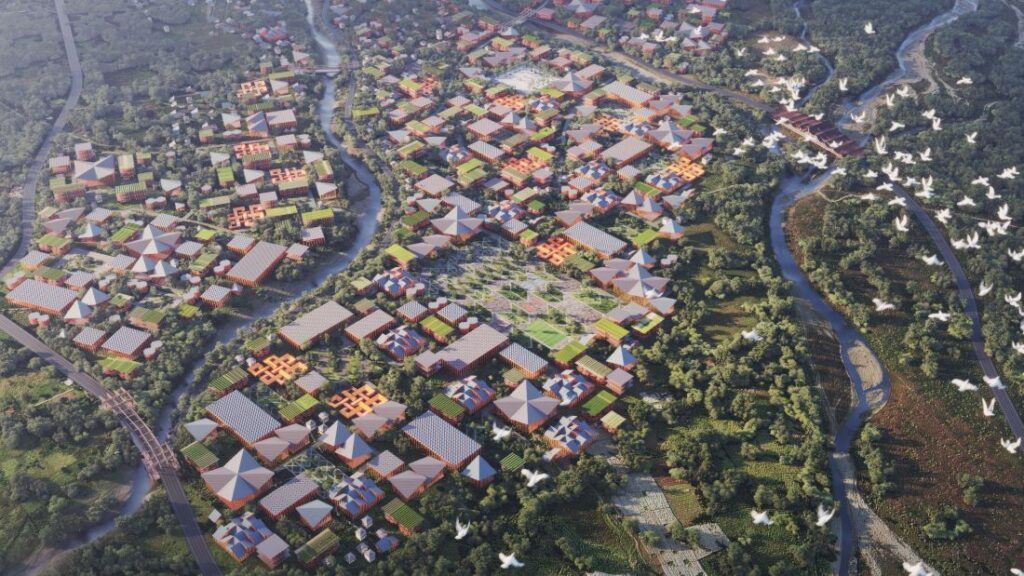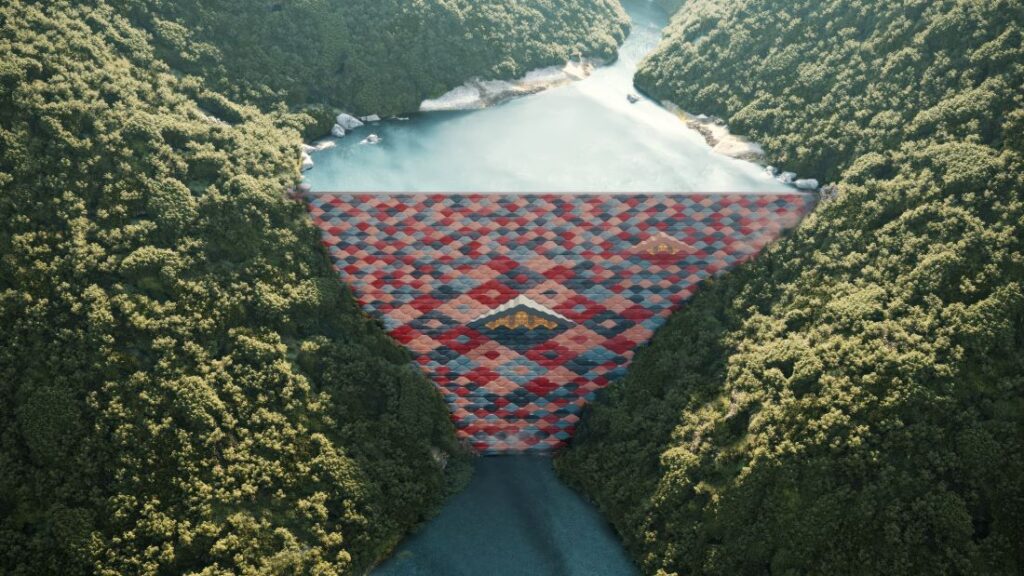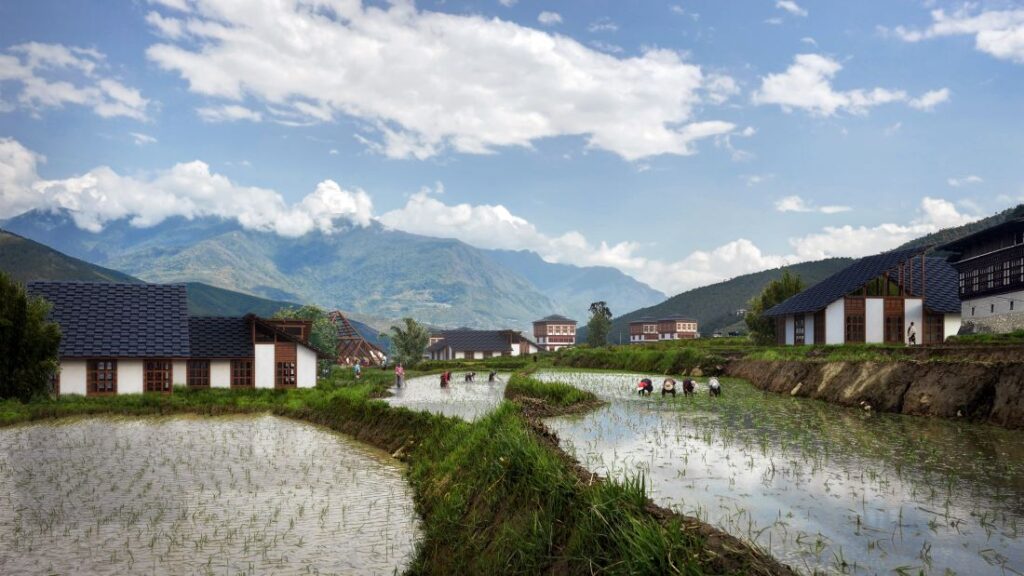This website uses cookies so that we can provide you with the best user experience possible. Cookie information is stored in your browser and performs functions such as recognising you when you return to our website and helping our team to understand which sections of the website you find most interesting and useful.
Bhutan announces Gelephu Mindfulness City, a ‘modern Buddhist lifestyle destination’
By Tessa Crowley | 2 February 2024 | Design, Travel
Embracing green energy, physical and digital connectivity, infrastructure and education, Bhutan’s new Mindfulness City will champion Bhutanese values and its unique Gross National Happiness philosophy
The Kingdom of Bhutan, Land of the Thunder Dragon; a mountainous country on the edge of the Himalayas, ruled by His Majesty the King, Jigme Khesar Namgyel Wangchuck. Famed for its National Happiness Index, this once-remote, landlocked country has found increasing popularity with travellers in recent years, who’ve been attracted by its Buddhist principles and reputation as a happy and spiritual place. And with the announcement of the new Gelephu Mindfulness City, Special Administrative Region (SAR), in the South of the Kingdom of Bhutan, travellers will soon have another reason to visit this beautiful, spiritual destination.
Balancing the country’s values of personal well-being with economic ambitions, Bhutan’s new city is set to cover a mammoth 250,000 acres. Dubbed an economic hub for South Asia, the extent of the king’s ambitions for the city became clear as he shared development plans this spring. Devised with investments in green energy, physical and digital connectivity infrastructure and education at its fore, Bhutan’s new city is expected to set a new standard for development, and become “a global example of how to build a sustainable human presence on Earth”.

So what does this mean? Firstly, the integration of natural and architectural structures will be key. The urban development has been “designed to enhance ecological systems…connect flora and fauna, as well as people and ideas”, with each of eleven proposed neighbourhoods shaped by the 35 rivers and streams that run through the site. The resulting areas resemble paddy fields, forming urban terraces that cascade down from the hills to the valley, increasing in density from recreational highlands to the urban lowlands. Each neighbourhood will furthermore be designed around a central public space, fanning out with repeating, symmetrical structures reflecting a Mandala, while landmark inhabitable bridges will stand for each of Bhutan’s nine Gross National Happiness domains.
Dubbed the world’s ‘Modern Buddhist Lifestyle Destination’ for spirituality, wellness and rejuvenation, the bridges will reflect this vision, acting as key destinations for the city and hosting the new airport, a Vajrayana spiritual centre, healthcare centre, university, and more.

A final bridge will play host to a hydroelectric dam on the city’s border, with a step-well retaining wall that offers viewpoints, staircases for meditative walks, and a temple. Named the Sankosh Temple-Dam, it’s design is inspired by and plans to be a visual representative of Gelephu’s foundational tenet: the harmonious coexistence of culture and nature.
For those hoping to experience some of the natural beauty for which Bhutan is known – 70% of the country being covered in lush forest – the city itself won’t disappoint, amplifying this abundant biodiversity. Paddy fields will line the site’s rivers and tributaries, futureproofing the city against monsoon flooding and leaving corridors for flora and fauna to flourish, while simultaneously acting as migratory routes for elephants and other wildlife. Furthermore, the city’s location, between the Phibsoo Wildlife Sanctuary and Royal Manas National Park, will make it easy for visitors to discover some of the country’s unspoiled nature for themselves.
Finally, for those heading to the country’s capital, Thimphu, direct access will be possible from the city and its new international airport and railway, already under construction, under plans to make the city the perfect new gateway for visitors to the country.








